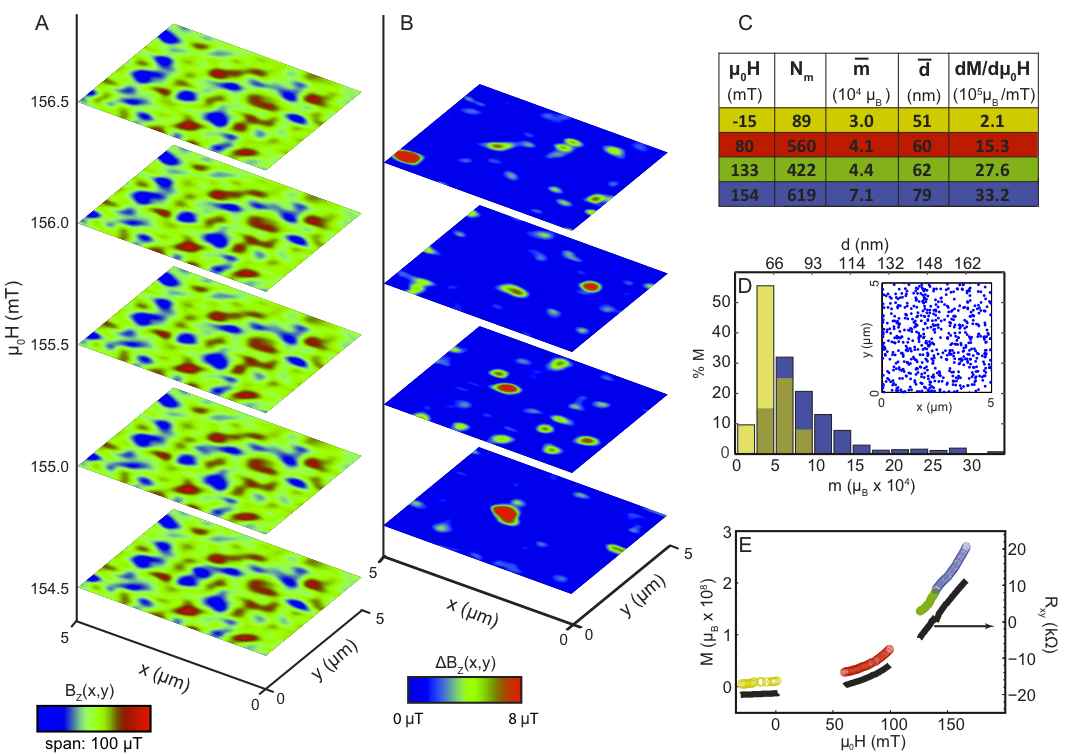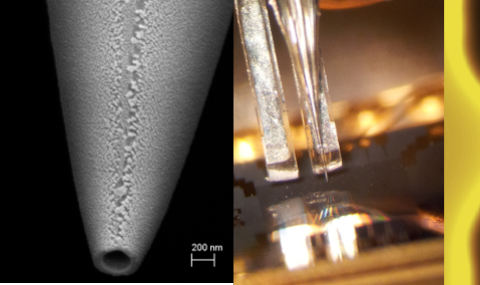Ferromagnetic topological insulator thin films such as Cr-doped (Bi,Sb)2Te3 have recently attracted much attention, in particular after the discovery of the quantum anomalous Hall effect in this material. Based upon macroscopic measurements of magnetization, the commonly held belief is that the samples host long ranged ferromagnetic order and that magnetization reversal occurs through the nucleation/propagation of magnetic domain walls over at least microscopic length scales.
Scanning SQUID microscopy measurements of magnetic topological insulator thin films surprisingly reveal a far more complex picture than commonly assumed: we find that the magnetism clearly originates in superparamagnetism, dominated by nanoscale regions of highly localized magnetic domains rather than long-ranged homogeneous magnetic order. By simultaneously monitoring both electrical transport and spatially-resolved magnetism, we show that the transition between quantum anomalous Hall insulator states is inherently linked with the dynamical behavior of the nanoscale magnetism.
Our experiment sheds completely new light on the very basis of the quantum anomalous Hall insulator.

Magnetization reversal dynamics.
- Sequence of SOT magnetic images Bz(x,y) taken at consecutive magnetic fields in 0.5 mT steps at T = 250 mK.
- Differential images ΔBz(x,y) obtained by subtracting pairs of consecutive Bz(x,y) images in (A) showing the isolated magnetic reversal events (red) of the superparamagnetic moments (see movie S1).
- Statistical analysis of 1690 reversal events attained over ranges of magnetic fields centered around four μ0H values: total number of moment reversals Nm, average magnetic moment
 , average superparamagnetic island diameter
, average superparamagnetic island diameter  , and rate of the magnetization change dM/d(μ0H) over the given range.
, and rate of the magnetization change dM/d(μ0H) over the given range. - Chart of relative contribution of different moment sizes m to the total magnetization change M within two field ranges centered at μ0H = −15 mT (yellow) and μ0H = 154 mT (blue). Inset: Location of the moment reversals within the field range around μ0H = 154 mT.
- Cumulative magnetization change M due to moment reversals m over four field ranges (left axis, colored symbols) and the simultaneously acquired Rxy (right axis, black). The total magnetization in each range is offset by an arbitrary constant.
Related lecture by Eli Zeldov (Tel Aviv-Tsinghua Xin Center 2nd International Winter School)


